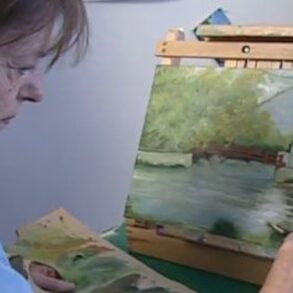SAN FRANCISCO (KGO) — San Francisco has long been known as an arts destination. But in recent years, the city has been losing out to places like Los Angeles. There are a number of factors involved in that decline, including the high cost of living here.
Take Reniel del Rosario, one of the Bay Area’s up-and-coming artists, who’s gaining prominence on an international level. We went to his studio in Vallejo, California.
“What you are seeing here is stuff I have packed for a solo show I have at Rebecca Hossack Gallery in London,” said del Rosario, who is a ceramics artist.
Vallejo, roughly 30 miles from San Francisco, is not what you might call a vibrant art hub, but it’s where del Rosario can afford to live.
“Of course, I would love to live closer to everything. It would put me closer to my friends. It would be be closer to all the things that are happening, from the openings to the closings,” he said.
MORE: Capturing Beatlemania: Sir Paul McCartney photo exhibit coming to SF’s de Young Museum
“San Francisco was one of the absolutely creative hubs in the world,” said renowned Bay Area artist Dewey Crumpler.
It was the place to be and be seen, where artists were inspired by other great names.
Neighborhoods claimed to be the art center of San Francisco. People bought and sold art.
But rent prices forced many artists, like Crumpler, to move to Oakland and Berkeley in the late 70s and early 80s.
At the turn of this century, the dot-com era wiped out much of the affordable housing for artists.
MORE: North Bay art installation sparks controversy as police get involved due to vandalism threats
Today there are only a few designated live-work residential buildings for artists in San Francisco, two in the Mission District and the Goodman 2 Arts Complex in Potrero Hill, where 258 artists recently applied for a single unit.
“That’s real. You cannot be a working artist in San Francisco and not have rent control,” said Krissy Keefer, artistic director of the Dance Mission Theater.
Nol Simonse is a dancer who has struggled to stay in the city. We asked him what he would tell his younger self.
“Don’t drop out of college, haha. That’s what I would tell my younger self,” said Simonse.
The San Francisco art community also says many in tech have little desire for the arts or to be collectors.
MORE: ‘As Sounds Turn to Noise’: Here’s San Francisco’s newest art installation along the Embarcadero
“That sensitivity was not cultivated in them, so they don’t have the same buying desire to move art into the world with the same passion that they do robotics and AI instruments,” Crumpler said.
“So that has reduced the demand within the local community for the San Francisco art market, and it’s part of the reason why it shrunk,” said Karen Jenkins-Johnson who has owned a gallery for 30 years. She says the slowdown began in 2000 and has never really regained steam.
In the art world, Los Angeles has replaced San Francisco as the New York of the west.
Let’s not fool one another — images of the unhoused and people doing drugs on the streets, that we still see today, also play a role in driving potential collectors away.
And though the local government awards grants to artists, part of that money comes from the hotel tax. That amount fluctuates every year, depending on the number of tourists.
MORE: ‘We Have A History’: de Young exhibit explores the dangers of LGBTQ+ life in Uganda
Jenkins-Johnson told us people aren’t coming to San Francisco like they used to.
“Of course they are not. They’re not coming when they know if you drive down a certain street, it literally doesn’t smell very good. So they’d rather go down to Los Angeles. LA has problems too, but I guess it’s bigger. San Francisco is small, but we were known for our quaintness being able to walk,” she said.
But there are still some supporters willing to put up the money to save the galleries like the Minnesota Street Project, which offers affordable spaces. Without it, some smaller galleries would have had to close.
The Fine Arts Museums received a donation of $1 million to buy 42 works of art from local artists, therefore supporting not only the artist, but the galleries that sold them.
“The museums have to be the anchors that start it, having good exhibitions. While they are coming to see the shows, they come to the galleries,” insisted Jenkins-Johnson.
MORE: ‘Calli’ exhibit opens at Oakland Museum honoring Chicano movement, celebrating Mexican Americans
Still, San Francisco continues to lose artists and galleries. Del Rosario has been given a residency at the American Museum of Ceramic Arts in Southern California.
“It’s a year-old residency that give me housing for a year, a stipend every month, unlimited material from their clay manufacturer down there, so it’s an opportunity I can’t really refuse,” he said.
Yet, another local artist saying “goodbye” for now to San Francisco.
“We can’t proceed like this indefinitely. No city is worth living in, particularly for me, if it doesn’t have a creative force inside of it,” Crumpler said.
Copyright © 2024 KGO-TV. All Rights Reserved.









